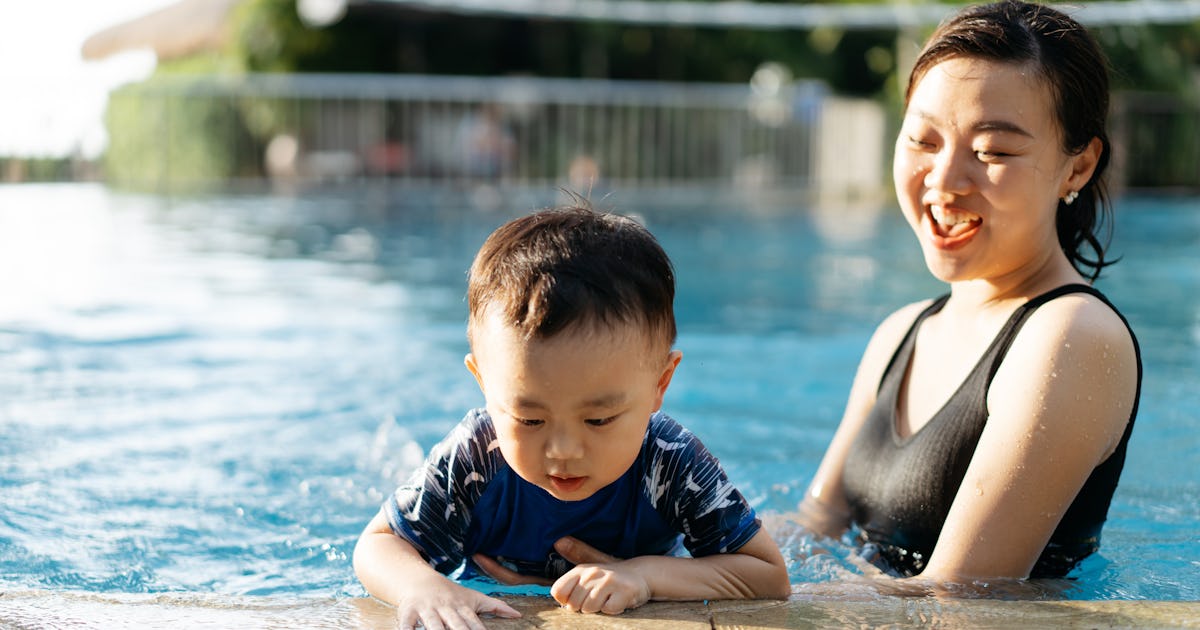
In an ideal world, every child would be put in swimming lessons the minute they could be. Drowning is the leading cause of death for children ages 1 to 4, according to the American Academy of Pediatrics, and it seems like a no-brainer to have your child learn both survival skills (like learning to float on their back in water) and legit swimming lessons as soon as possible. But swim lessons can be an overwhelming privilege. They’re often expensive, they aren’t always local to parents, and they can fill up so fast that you’re always on a wait list for a class that works for your family’s schedule. But luckily, there are some things you can do at home to help your child learn how to swim — and how to remain safe around any body of water.
Again, swim lessons are ideal. From Infant Swim Rescue lessons for smaller kiddos to lessons at a swim school or private instruction, there are a ton of options out there. Dr. Molly O’Shea, official pediatrician and parenting expert of Goldfish Swim School, tells Scary Mommy to check if your local swim schools offer scholarships. “Many work with organizations like Every Child a Swimmer to offer swim scholarships to help build up basic water safety skills.”
But in the meantime, O’Shea recommends starting off by teaching your child to respect key water safety rules, such as the following:
- Never swim alone — have an adult with you at all times
- Enter the water feet first
- Wear a life jacket until you are a strong swimmer
- If someone in the water needs help, throw something that floats and get an adult
- Follow all posted rules at pools
If you’re ready to work on actual swimming skills, O’Shea says you can have young children “practice blowing bubbles and getting used to having their head wet in the bathtub or baby pool.” For older children, she recommends practicing swim strokes and “kicking on dry land by having them lie down on their bellies on a picnic table bench. That can help get the motions down pat!”
But above all, exposure to the pool and water is what’s really going to set these skills in. “Provide them opportunities to be in water with adult supervision whenever possible,” O’Shea recommends. “Community and hotel pools, beach days, and backyard pools can all provide great opportunities to get them comfortable in the water and to work on skills.” She also says it’s important to make sure you’re also being a “good water safety role model” by staying watchful and always remaining focused on children in the water. “Things can change in a second,” O’Shea says. “Drowning incidents are not like they appear in the movies — they’re often silent and fast.”
So be sure to always remove pool toys from any body of water and empty everything from tubs to inflatable pools. Keeping this as a rule for yourself will help avoid any temptation set up for your kids.






